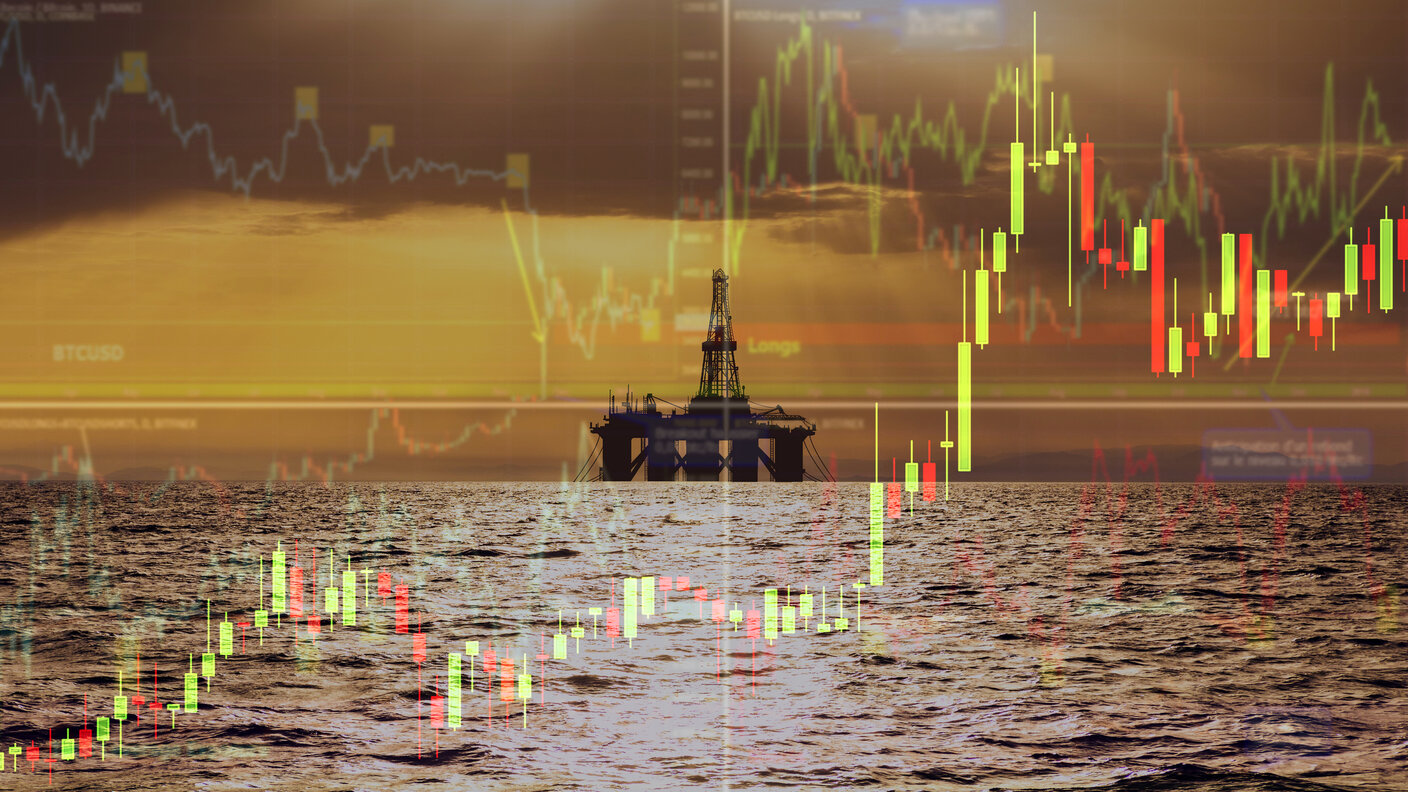How investors can profit from high food prices
A growing global population makes soft commodities a structural growth market. Amid rising food prices, here’s how to protect your profits

Britain’s inflation rate now appears, at last, to be under control. The June year-on-year increase in the consumer price index (CPI) remained in line with the 2% official target. While service-sector prices were still rising at 5.7%, there was one particular bright spot. Having posted an alarming annual upswing of 17.4% a year ago, food and non-alcoholic beverage inflation dropped for the 15th consecutive month to 1.5%. This was down from May’s 1.7% and represented the lowest rate since October 2021, a few months before Russia invaded Ukraine.
Meanwhile, compared with the same month in the previous year, EU food prices were up just 1.5% in June 2024, according to Trading Economics. And there could be more near-term good news on the way for consumers. “Soft” commodities are agricultural foodstuffs that are grown rather than extracted or mined. Livestock, cotton, sugar, corn and wheat are classic examples, although meat, cereals, grains, oil seeds, coffee, cocoa and orange juice are often included too.
Soft-commodities futures are among the world’s oldest exchange-traded products and are used by farmers wanting to lock in the future prices of their crops, by commercial purchasers and by speculative investors. Put simply, they give a good guide to where food prices are heading next. The Food and Agriculture Organisation of the United Nations’ (FAO’s) Food Price index (FFPI) is the gold-standard gauge of monthly changes in international prices of a basket of food commodities. In June this year, the FFPI remained 2.1% lower than its value a year ago and was 25% below its peak of March 2022.
MoneyWeek
Subscribe to MoneyWeek today and get your first six magazine issues absolutely FREE

Sign up to Money Morning
Don't miss the latest investment and personal finances news, market analysis, plus money-saving tips with our free twice-daily newsletter
Don't miss the latest investment and personal finances news, market analysis, plus money-saving tips with our free twice-daily newsletter
Food prices: a changing trend
So at first glance, it looks as if the short-term lagged effect of the most recent falls in the FFPI index means that shop food-price inflation is set to ease further. Yet this is only part of the story. The June 2024 FFPI print was unchanged from the revised figure for May, but the latter reflected three consecutive monthly upticks. Increases in the price indices for vegetable oil, sugar and dairy products balanced out a decrease in the index for cereals, while the FFPI meat index was almost unchanged, says the FAO. In other words, soft commodity prices appear not just to have bottomed out, but also to be on the rise again.
While major cereals’ global export prices fell month-on-month, the drop in the value of wheat mostly reflected seasonal pressure from ongoing northern hemisphere harvests. And Turkey’s temporary import ban also contributed to lower prices. Meanwhile, June’s FAO Vegetable Oil Price index rose 3.1% from May to its highest level since March 2023. The increase was driven by higher palm, soy and sunflower oil prices signalling firm demand from the biofuel sector in the Americas and declining export opportunities in the Black Sea region.
Furthermore, the FAO Dairy Price index climbed 1.2% from May and 6.6% from a year ago. Butter prices hit a 24-month high, while the cost of skimmed milk powder increased on the back of strong Western European demand, offsetting slightly lower meat values. Even sugar, down 22% from June 2023, rose 1.9% from May to June 2024.
Global supply squeeze
In the longer term, global demand for food is only set to head upward due to increases in the planet’s population. Currently just over eight billion, this is set to hit 8.5 billion in 2030, 9.7 billion in 2050 and 10.4 billion by 2100, says the UN. The key factor influencing world soft-commodity prices, then, is supply – on which score there are some worrying signs for the future. Prior to the Russian invasion, Ukraine, once known as the breadbasket of Europe, was a top barley, corn and rapeseed exporter. Yet over the longer term, supplies from Europe’s breadbasket are more likely to fall than rise. That would lead to higher prices.
In the US, despite this year’s unexpectedly good harvest, other potential price tensions are emerging. The most recent US Department of Agriculture (USDA) report indicated that the total number of cattle and calves in the country on 1 January 2024 was 87.2 million, 2% lower than the previous year. This was the lowest level at the start of the year since the 1951 figure of 82.1 million. Specifically, the number of calves was estimated at 33.6 million, down 2% from 2023 and the smallest calf crop since 1948’s 33.1 million. Yet, since 1951, the US population has grown by 125%. For the home of the hamburger, these are worrying statistics.
Again, there are lags in the beef supply chain, meaning that shop meat prices echo producers’ experiences of between 12 and 24 months previously. In other words, lower cattle numbers suggest upward pressure on future beef prices. Global farming is vulnerable to several longer-term threats, too. Natural disasters such as hurricanes, floods, fires, earthquakes and tornadoes challenge agricultural production, notes the US Environmental Protection Agency (EPA). Such events can cause water contamination, loss of harvests or livestock, increased susceptibility to disease, and destruction of irrigation systems and other agricultural infrastructure.
Although “international food prices have declined since their historic peak after the start of the war in Ukraine”, notes Alvaro Lario, president of the International Fund of Agricultural Development, “despite the current trend, we must remember how fragile our food systems are. They are increasingly threatened by more frequent and intense weather extremes and volatile geopolitics”.
From a global perspective, “there are several factors causing the increase in food prices worldwide”, notes Levi Sucre Romero of the Mesoamerican Alliance of Peoples and Forests. “Firstly, the high dependency on oil drives up the costs of food production and transportation. Agricultural machinery, fertilisers and product transportation rely heavily on oil, so any increase in its price directly affects the final cost of food.”
“Over-exploitation of agricultural lands and intensive use of agrochemicals have led to a growing need for fertilisers to maintain production, which further increases costs.” Environmental economist Shouro Dasgupta points out in the UK climate and energy policy monitor Carbon Brief that policy failures in the worldwide food system also lead to food-price inflation. “One is the inadequacy of storage facilities, especially in low- and middle-income countries. Another is the concentration of food production in certain regions and on selected crops.”
Impact of urbanisation on food prices
Then there’s urbanisation. In 2023 the US lost another 1.1 million acres of farmland, says the USDA’s Farms and Land in Farms report. Since 2016 US farmland acreage has fallen by around 24 million acres (almost 3%). One of the main reasons is the expansion of cities and towns into previously rural areas, and the conversion of farmland into residential, commercial or industrial uses. What’s more, there are problems with topsoil. This contains vital nutrients for growing plants.
“The world grows 95% of its food in the uppermost layer of soil, making topsoil one of the most important components of our food system,” says Susan Cozier in The Guardian. “But thanks to conventional farming practices, nearly half of the most productive soil has disappeared in the world in the last 150 years, threatening crop yields.”
The impact of microplastics in soils, sediments and fresh water, meanwhile, could have a long-term negative effect on terrestrial ecosystems throughout the world, according to the Leibniz-Institute of Freshwater Ecology and Inland Fisheries (IGB). In turn, this could damage food output even more.
What might all this mean in numeric terms? Climate change, in particular rising temperatures, may lift world food prices by between 0.9% and 3.2% per year by 2035, according to a recent study by researchers in Germany.
While Oxford Economics expects a global food-price fall of a further 5.6% this year, the consultancy believes that prices “are now near a floor and will begin to rise gradually through [the second half of] 2024”. It also predicts that global food values will increase in 2025, while risks to its forecast remain “overwhelmingly skewed to the upside” with adverse weather conditions on the cards.
To be clear, we’re talking about long-term risks here. Yet they could all ultimately lead to rising soft commodity prices, “food insecurity”, scarcity and social unrest. We can’t stop them happening, but we can try to protect ourselves – and our finances. Our recommendations are below.
How to profit from soft commodities
The sterling-denominated WisdomTree Agriculture ETC (exchange-trade commodity) fund (LSE: AGAP) provides a total-return investment in a basket of agriculture commodity futures contracts that track the Bloomberg Agriculture Subindex. It’s down by 27% from April 2022. You must answer a “sophisticated investor” questionnaire before buying AGAP.
The Barings Global Agriculture Fund has sterling-denominated shares. The fund aims to achieve capital growth by investing in equity and equity-related securities in the agricultural sector, “from planting to harvesting to delivering food to the table”. It focuses on quality and long-term growth potential. The price has fallen by 27% from its April 2022 peak.
Moving on to individual stocks, Archer Daniels Midland (NYSE: ADM) is the global leader in human and animal nutrition and the world’s top agricultural origination and processing company. It has a market capitalisation of $31 billion. Operating across six continents, it ranges from plant-based proteins to probiotics in developing nutrition trends, transforming crops into ingredients and solutions for foods, beverages and supplements worldwide.
The shares have fallen by 35% since November 2022 owing to global soft-commodity price drops. Yet the company has increased its annual dividend every year since 2001. While current-year profits are expected to fall compared with 2023, the stock is on a cheap-looking 2025 price/earnings (p/e) ratio of 11.5, while the yield is 3.2%. It’s a long-term buy.
$24.5 billion-market cap Nutrien (Toronto: NTR) is the world’s largest provider of crop inputs and services, helping growers increase food production sustainably. The firm produces and distributes potash, nitrogen and phosphate products for agricultural, industrial and feed customers worldwide. Nutrien is on an appealing 2025 p/e of 11.5, while the dividend yield is a very handy 4.3%. It’s another long-term buy.
This article was first published in MoneyWeek's magazine. Enjoy exclusive early access to news, opinion and analysis from our team of financial experts with a MoneyWeek subscription.
Get the latest financial news, insights and expert analysis from our award-winning MoneyWeek team, to help you understand what really matters when it comes to your finances.
David J. Stevenson has a long history of investment analysis, becoming a UK fund manager for Oppenheimer UK back in 1983.
Switching his focus across the English Channel in 1986, he managed European funds over many years for Hill Samuel, Cigna UK and Lloyds Bank subsidiary IAI International.
Sandwiched within those roles was a three-year spell as Head of Research at stockbroker BNP Securities.
David became Associate Editor of MoneyWeek in 2008. In 2012, he took over the reins at The Fleet Street Letter, the UK’s longest-running investment bulletin. And in 2015 he became Investment Director of the Strategic Intelligence UK newsletter.
Eschewing retirement prospects, he once again contributes regularly to MoneyWeek.
Having lived through several stock market booms and busts, David is always alert for financial markets’ capacity to spring ‘surprises’.
Investment style-wise, he prefers value stocks to growth companies and is a confirmed contrarian thinker.
-
 Goodwin: A superlative British manufacturer to buy now
Goodwin: A superlative British manufacturer to buy nowVeteran engineering group Goodwin has created a new profit engine. But following its tremendous run, can investors still afford the shares?
-
 Is US stock market exceptionalism over?
Is US stock market exceptionalism over?US stocks trailed the rest of the world in 2025. Is this a sign that a long-overdue shift is underway?
-
 What happened to Thames Water?
What happened to Thames Water?Thames Water, the UK’s biggest water company could go under due to mismanagement and debt. We look into how the company got itself into this position, and what investors should expect.
-
 One day left for households to claim the £200 Alternative Fuels Payment to help with heating bills
One day left for households to claim the £200 Alternative Fuels Payment to help with heating billsAdvice Households could be due a £200 payment if they heat their homes using alternative fuel sources and aren’t connected to the mains gas grid - but time is running out to claim the money. We explain what you need to know.
-
 Energy bill to drop 17% this weekend as new price cap kicks in
Energy bill to drop 17% this weekend as new price cap kicks inNews Typical households on default energy tariffs will see their energy bills drop by £426 a year following today's energy price cap drop.
-
 Don’t count resources out
Don’t count resources outAnalysis Commodities have performed poorly over the past year, but they tend to move in long and volatile cycles.
-
 Energy bill refunds: Ovo and Good Energy to pay out £4m to customers who were overcharged
Energy bill refunds: Ovo and Good Energy to pay out £4m to customers who were overchargedNews Ofgem, the energy regulator, found the two suppliers had overcharged nearly 18,000 customers. Are you due a refund?
-
 E.on Next, Good Energy and Octopus Energy pay £8m amid failures over late final bills
E.on Next, Good Energy and Octopus Energy pay £8m amid failures over late final billsNews Three energy firms have paid £8 million over compensation failures after lengthy delays in producing final bills to more than 100,000 customers when they switched suppliers
-
 Heat pump rules are changing: how to reduce the cost of installation
Heat pump rules are changing: how to reduce the cost of installationTips The rules around installing a heat pump will change on 29 May, making it easier for some homeowners. We look at how much a heat pump costs, how the £7,500 government grant works, and other discounts available
-
 Energy firms holding £7bn in customer credit
Energy firms holding £7bn in customer creditTips Energy firms are holding almost £7bn in customer credit with some households owed more than £400 in credit. We explain how to claim your money back.